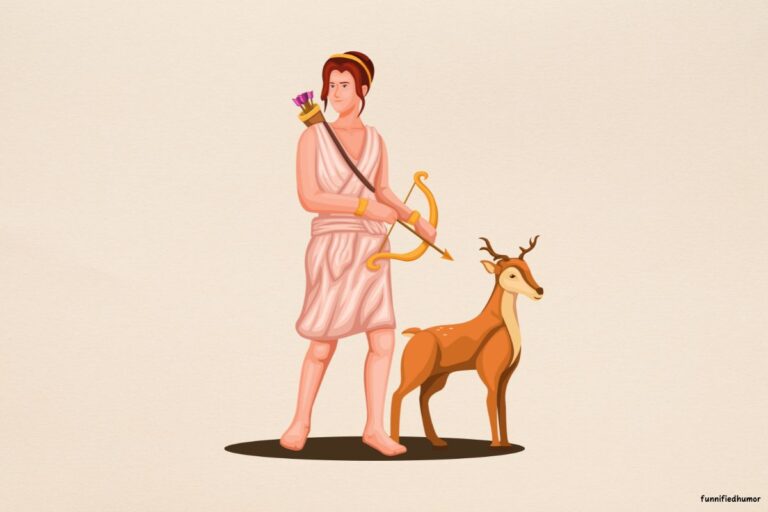3 Short Stories About Colonialism

Our history is filled with tales that weave together the fates of empires, nations, and individuals. At its heart, the era of colonialism carries an intricate mixture of exploration, ambition, oppression, and transformation.
But how do we truly come to understand the complex legacy left behind by those tumultuous times?
The answer lies in stories.
Short, powerful, and evocative tales that transport us back to those epochal moments.
Dive into a collection of riveting short stories about colonialism, where you’ll journey to distant lands, witness clashes of cultures, and be privy to voices that echo with timeless emotions.
Each narrative, while a fragment of the vast mosaic, tells a story that’s larger than life.
Join us as we traverse continents and centuries, uncovering the truths, challenges, and experiences that defined an era.
Stories about Colonialism
1. The Unknown Island
Captain Elbridge stood at the helm of the Dawn Voyager, eyes fixed on the horizon. For weeks, his crew had sailed through uncharted waters, spurred on by rumors of an untouched island teeming with gold and other precious commodities.
“Land ho!” cried the lookout.
The island emerged from the morning mist, its lush hills and dense forests hinting at untold mysteries. As the ship drew closer, a city of elegant structures built from an unfamiliar material and adorned with gleaming ornaments became visible.
Captain Elbridge was stunned. “This isn’t what we expected,” he murmured.
A delegation of islanders soon approached the ship. Dressed in garments of intricate design and vibrant color, they moved with a quiet confidence. Their leader, a tall woman with piercing eyes, introduced herself as Anahera.
“Welcome to Atarau,” she greeted, “Island of Light. Why do you come to our shores?”
Elbridge straightened up, trying to muster his usual authority. “We come in the name of exploration and opportunity. We wish to establish a colony here.”
Anahera raised an eyebrow. “A colony? On our land?”
Elbridge was taken aback. “With all due respect, madam, our nation is powerful and expansive. It’s in your best interest to align with us.”
Anahera smiled gently. “Before we discuss further, come with us. Learn our ways.”
Curiosity piqued, Elbridge agreed.
Atarau was nothing short of a marvel. Instead of the smoky factories of Europe, here were clean energy turbines and structures harnessing the sun and wind’s power. The streets were bustling, yet serene, with no sign of poverty or despair.
Over dinner, Anahera explained, “Atarau was once like the world you know. But we decided to change, to live harmoniously with nature.”
“But where is your army?” Elbridge inquired.
“We don’t believe in warfare. Disputes are settled through dialogue.”
Elbridge chuckled. “Such idealism. But what if a power, greater than yours, decides to take over?”
Anahera leaned forward. “Why take by force what can be shared freely? Instead of a colony, why not an alliance?”
Elbridge scoffed. “And have our people adopt your ways?”
The following days were filled with intense debates between Elbridge, his crew, and the Atarau council. Instead of guns and swords, words were the weapons. The islanders challenged the crew’s notions about power, control, and progress.
One evening, Elbridge found himself walking with Anahera. “You’ve been holding back something,” he accused. “What’s the secret of Atarau’s success?”
She led him to a grove where a luminescent tree stood. “This is the Heart of Atarau,” she said, “it symbolizes our commitment to balance. Our success isn’t in our technologies, but in our mindset. We prioritize well-being over wealth.”
Elbridge looked uneasy. “If my people knew of this, they’d try to seize it.”
Anahera replied, “The tree’s power is not in its physical form but in the philosophy it represents. Would you threaten a way of life for mere material gain?”
The captain wrestled with his beliefs. The islanders’ arguments had left deep impressions on him.
One morning, Elbridge announced, “We won’t establish a colony. Instead, we’d like to propose trade and learn from Atarau.”
Anahera smiled. “That’s a start.”
The Dawn Voyager sailed back with not gold or land, but stories of an island that challenged and changed them. Atarau became a legend, a beacon of hope for those seeking a better way to live.
And Captain Elbridge? He became an ambassador, not of conquest, but of understanding, bridging worlds through the power of dialogue and mutual respect.

2. The Sand Narratives of Nia
The Kalinga tribe had settled in the same place for generations. Surrounded by undulating hills and a winding river that offered them fish, their lives were filled with songs and stories that passed down wisdom from one generation to the next. Nia, with her nimble fingers, was the best sand storyteller of her generation. Every evening, children and adults alike would gather around to watch as Nia crafted intricate patterns and designs on the ground, her narratives weaving the history of the Kalingas.
One day, just after dawn, a murmur went through the village. Strangers had been spotted near the river — pale-skinned, with strange attire and shiny objects that reflected the sun. These were the European explorers.
Elder Mazi called a council. “They have come seeking trade, saying they bring items of great value from lands beyond the seas.”
Nia watched from the shadows as the explorers displayed their wares: beads, mirrors, and cloth unlike anything the Kalingas had ever seen. They spoke a language that was unfamiliar, but Mazi, with his years of interacting with various tribes, managed to communicate.
While watching, a specific pattern in the sand caught Nia’s eye. Swirls interconnected with sharp, broken lines. It was eerily similar to an old legend about outsiders arriving with two faces – one of peace and one of destruction.
That evening, as the explorers sat around, intrigued by the village customs, Nia began her sand story. The patterns she formed showed harmonious trade, of two worlds colliding and benefiting from one another.
The leader of the explorers, Captain Delmont, was entranced. “What does this show?” he asked.
“It’s a tale from our past,” Nia began, “of strangers who came and traded with us. They brought prosperity.”
Delmont smiled, reassured.
But the next night, Nia’s patterns shifted. The swirls were consumed by the sharp, broken lines. The sands showed villages in chaos, families torn apart.
Delmont, noticing the stark change, questioned, “What does this tale speak of?”
Nia, her voice soft yet firm, replied, “It speaks of the same strangers. While they came with goods, they also brought desires. Desires that turned brother against brother, that shattered peace.”
The third night, Nia’s drawings took a different form. They depicted the Kalingas and the strangers standing on opposite sides of a chasm, with a bridge, fragile and rickety, connecting them.
“This story,” Nia said, looking directly into Delmont’s eyes, “speaks of choices. The bridge can hold if both sides tread with care. But if greed overshadows, it will crumble, taking everyone down with it.”
Delmont, though a hardened explorer, felt the weight of Nia’s words. He looked around at his men, who had already begun eyeing the village’s resources.
The next day, a quiet discussion took place among the explorers. They had come in search of new trade routes and treasures, but Nia’s narratives had awakened a consciousness they hadn’t anticipated.
Delmont approached Nia, “Your stories are powerful, young storyteller. We came with intentions of trade, but we must also respect. Teach us the way.”
Nia nodded. And thus, began a new chapter for the Kalingas and the Europeans. Not just of trade, but of mutual understanding and respect.
Years later, long after the explorers had left and trade routes flourished, stories of Nia, the sand storyteller, echoed far and wide. They spoke not just of her art but of her wisdom, that had steered the course of history with just grains of sand.

3. The Book of Visions
In the village of Anandapur, nestled among the dense groves and pristine rivers of colonial India, life was simple. The days were filled with hard work, and the nights with stories of old told around crackling fires. That was, until one day, a group of children playing by the riverbank stumbled upon a peculiar book.
The cover of the book was weathered, its pages thick and filled with unfamiliar symbols. “Look at this!” exclaimed Vinay, holding up the book. “I’ve never seen anything like it!”
“Neither have I,” said Meena, squinting at the strange markings. “It’s not Hindi, nor Sanskrit. What language is this?”
Their chatter attracted the attention of old Master Iyer, the village teacher. Upon seeing the book, his eyes widened. “This… this isn’t any language I recognize. Let’s keep it safe.”
However, word of the discovery spread quickly. And by dusk, Captain Reynolds, an English officer stationed nearby, came to know about it. He visited the village headman. “This book could be a precious artifact,” he said smoothly. “It should be in a museum in England, where scholars can study it.”
But the headman, wise and old, sensed the greed in Reynolds’ eyes. “It was found on our land. It stays with us.”
That night, as the children sat around the fire, they spoke about the book. Little Aisha, Vinay’s younger sister, whispered, “I saw a vision when I touched it.”
“A vision?” Meena exclaimed.
Aisha nodded. “I saw tall buildings, machines flying in the sky, and children, just like us, reading and writing.”
Vinay, holding the book, said, “When I touch it, I see vast fields of green crops, and no one is hungry. There are celebrations, and our flag flies high, free from the British.”
Master Iyer, overhearing their conversation, realized the value of the book. It wasn’t just an artifact; it was a portal to the future, showing a prosperous, independent India. It symbolized hope and dreams.
“Captain Reynolds cannot have this,” he declared.
The village rallied. They hid the book in different places, from the temple’s inner sanctum to the deep caves beyond the hills. Each day, the visions became clearer, motivating the village even more.
“Why are they so desperate to keep it?” Reynolds wondered aloud to his lieutenant.
“Perhaps there’s gold inside?” The lieutenant suggested.
However, their attempts to steal the book were in vain. With each attempt, the village became more united. They organized night vigils and secret gatherings, discussing their visions and dreams for a brighter future.
One evening, during such a gathering, Meena voiced out, “Maybe it’s not just about the book. It’s about us, our heritage, and our dreams. The British have taken so much from us, but they can’t take away our hope for the future.”
As the days turned to weeks, Captain Reynolds grew frustrated. “Why can’t we find it?!” he exclaimed.
“They are cleverer than we thought,” his lieutenant replied.
Then, one fateful night, a huge storm ravaged the village. The river swelled, threatening to engulf Anandapur. Amidst the chaos, Captain Reynolds made his move, using the storm as a cover.
As the villagers scrambled to save their homes, Reynolds and a group of soldiers stormed Master Iyer’s hut, convinced that the book was there. But all they found was a simple decoy.
Emerging from the hut, Reynolds saw Vinay, holding the real book, standing defiantly atop a hill, the wind and rain lashing around him.
“Give it up, boy!” Reynolds shouted.
Vinay, with fire in his eyes, yelled back, “This book isn’t just paper and ink! It’s our dreams, our future! You can’t take that from us!”
The wind carried his words, and the village rallied once more. They surrounded Reynolds and his men, showing a united front that the soldiers weren’t prepared for.
Cornered, Captain Reynolds had no choice but to retreat.
The storm subsided, and Anandapur was saved, both from nature’s fury and colonial greed.
Years later, as India celebrated its independence, Anandapur was just one of the countless villages rejoicing. The book, by then, had been carefully preserved, not just as a mysterious artifact, but as a testament to the resilience and unity of the people.
To the outside world, the story of a book showing visions of the future was a mere legend. But to the people of Anandapur, the true mystery was never about the book, but the power of collective dreams, hope, and the undying spirit to protect one’s heritage against all odds.





